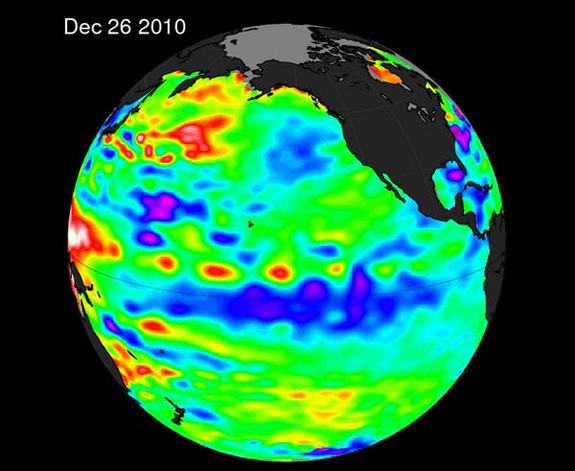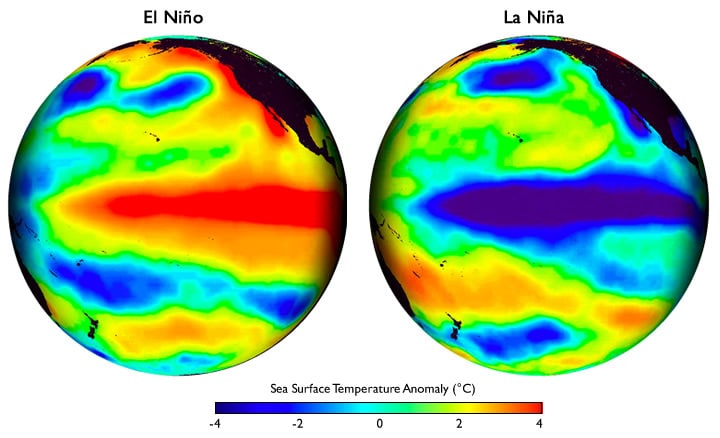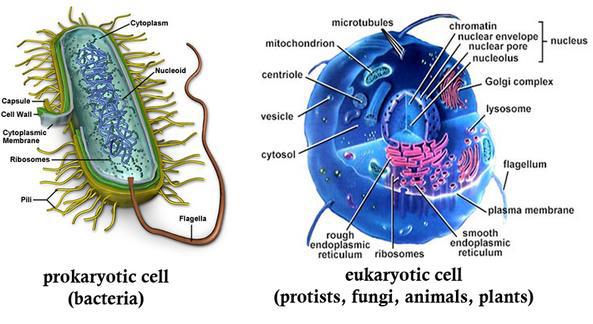The Difference between El Nino and La Nina – Just Like Yin and Yang
El Nino and La Nina, you might have heard a lot about these two weather phenomena and maybe you’ve even experienced them, but you’re not quite sure what the real difference between them is.
They are both two phases of the same natural cycle named El Nino Southern Oscillations (ENSO), but you can say they are like yin and yang. Let’s take a closer look at both of them and see what they’re all about.
El Nino

El Nino is the warm phase of the ENSO and its name can be translated into “Little Boy” or sometimes “Christ Child”, inspired by the time of the year when the phenomenon was observed to occur (in December, more precisely).
During El Nino, because of weakened surface winds, the surface temperature in the Pacific Ocean turns unusually warm, determining a rising motion in the atmosphere above. This, in turn, leads to intensified rain and storms over the ocean.
Furthermore, the increased heat also drives the Gulf Stream south, triggering instabilities in the atmosphere and, thus, making the Southern USA more prone to tornadoes and severe storms.
While the effects of it are felt the strongest in the winter months, the phenomenon can last much longer; between 9 and 12 months.
Celsius Vs. Fahrenheit: What Are The Differences?
La Nina

La Nina is the opposite of El Nino both in terms of name and general characteristics. When the winds across the Pacific strengthen, they push away the warm water at the surface and bring up the deeper, cooler water, triggering a rising atmospheric motion and determining drier weather.
The cool temperature also shifts the Gulf Stream north, bringing along risks of severe weather. The La Nina effects can be just as long-lasting as its “male” counterpart’s; between 9 months and a year.
Recommended for You:
The Differences Between El Nino and La Nina
Now that you have a better understanding of these two phenomena, let’s have a closer look at the differences between La Nina and El Nino. The table below will show you a clear side-by-side comparison of all the most important characteristics.
El Nino |
La Nina |
| El Nino is the result of easterly trade winds weakening. | La Nina occurs because of the same winds, but when they become more prominent. |
| During El Nino, the Southern part of US is unusually cooler, while the northern regions become warmer than average. | During La Nina, the North is colder and the South is unusually warm. |
| El Nino leads to warm surface temperatures. | La Nina leads to colder surface temperatures. |
| El Nino pushes the jet stream south | La Nina switches the jet stream’s position north. |
| The phenomenon triggers a downward vertical movement in the atmosphere | The phenomenon leads to an upward atmospheric motion. |
| El Nino means “Little Boy” | El Nina means “Little Girl” |
Did you find our post on the comparison between El Nino and La Nina useful? Subscribe to our newsletter and get similar articles and the latest news!







